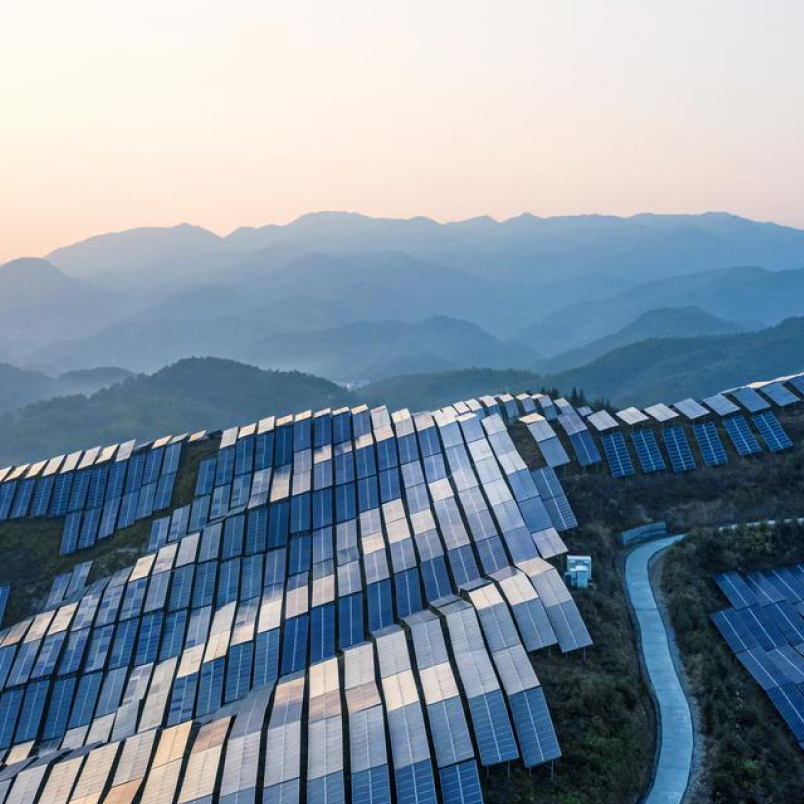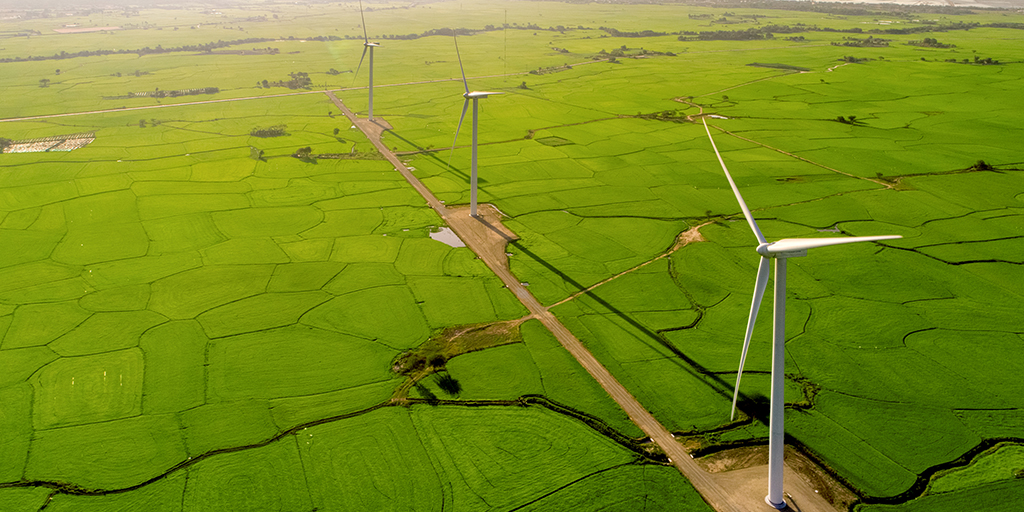Markets are reacting to the threat of tariffs – but where there are challenges, there are also opportunities, maintains Chris Ortega at Morgan Stanley Infrastructure Partners
The second term of US President Donald Trump has raised questions around his stance on energy transition and the direction of investment from these assets. Chris Ortega, head of Americas at Morgan Stanley Infrastructure Partners, discusses what the next four years might have in store and the implications of all this volatility on infrastructure assets and the industry at large.
Q: How do you see the Trump administration impacting infrastructure investment?
The way we think about the Trump administration is threefold. Firstly, how does one think generally about infrastructure in their asset allocation? Secondly, within infrastructure, how do we think thematically or strategically in terms of deployment? And lastly, what is the tactical impact of this? This was our framework even prior to the tariff announcements.
The volatility over the start of the second Trump administration re-emphasises the importance of one’s infrastructure allocation. Infrastructure investments typically look for exposure to essential assets with a high degree of earnings visibility and durability. In today’s climate, that seems more important than ever.
From a strategic perspective, while we are still digesting the evolving impact of any potential tariffs – prior to the announced pause on tariffs to non- retaliatory countries, we saw this as materially rewiring the flow of goods. Even if the tariffs do not return, there will be potentially enduring ramifications. The world now knows this is a real possibility, and from a corporate perspective, this may require a higher return to make a long-term investment decision if it could be impacted in the future by a tariff.
Most of the focus prior to the tariffs, was on the tactical approaches to the Trump administration. Many were what the impact would be on the Inflation Reduction Act, for instance. Generally over history, administrations edit and reshape what their predecessors have done. For example, the Obama administration repealed the crude export ban which seemed unexpected from a Democratic government but it reshaped oil production both in the US and overseas. We expect there to be some editing of the IRA but for it to be mostly on the margin, because most dollars currently go to Republican states and districts. That is why we try to focus on the unit economics of our businesses and really struggle with models where economics are dependent on subsidies.
Q: To what extent do you see the Trump administration’s stance on renewable energy affecting these kinds of projects?
The answer is nuanced and depends on where you look within renewable energy. For instance, offshore wind will be more challenged in the US, because the unit economics are dependent on subsidies and credits from the IRA. The Trump administration has been very vocal that they are negative on US offshore wind. Consequently, federal permits for incremental offshore wind projects will likely be more challenging to obtain.
Conversely, there are other parts of renewable development where the Trump administration has either been supportive or at a minimum neutral. Here I would point to solar and battery, with the former doing very well in the first Trump administration when the sector recorded phenomenal growth. A big driver of this is the US power demand growing for the first time in several decades.
Q: Are other factors boosting investor interest in solar?
We have been following solar development, as a theme, for the last eight to nine years. There was a lot of activity in the solar space in 2021-22, and many of our peers invested at that time. We had a renewable investment in Europe, but despite looking at these US opportunities, we did not pull the trigger. For us, this was really a valuation-driven decision.
Fast forward to today, and we feel valuations for operating assets are now more reasonable. People have internalised the experience of recent years as to what a reasonable development pace for these projects is. This is now a more interesting time to be invested in solar, hence our stake in utility scale renewables firm Torch Clean Energy. We are excited about this company because the management team have a demonstrable track record of success. They have developed more than a gigawatt worth of assets over the past few years, and their regional market expertise really matters. It is very hard to find management teams with such great expertise across the board.
We were also very focused on supply chain management with Torch, procuring equipment shortly after committing to off-takers and prioritising domestic manufacturers to minimise both tariff and supply chain risk. In a volatile pricing environment, minimising the gap in timing between securing offtake and locking in cost is critical to manage risk and maintain project margins.
Meanwhile, the macro environment for power is improving, with electric load expected to grow after decades of flat demand, driven by data centre proliferation, reindustrialisation and electrification. Solar and battery storage is increasingly relied upon to meet electricity demand, as other sources, such as natural gas or wind, have much longer development cycles.
Q: How is the proliferation of data centres affecting power demand?
The two sectors are increasingly intertwined, with available power being the largest bottleneck to data centre expansion in most markets. Recent reports estimate that power demand from data centres will increase by 165 percent by 2030, contributing to a $720 billion investment need to the grid during that time. In the interim, utilities and grid operators are struggling to balance data centre interconnection requests against reliability needs and consumer costs. On the power side, we have been working with both our natural gas and renewable platforms to support utilities by increasing power supply in a timely manner to enable data centre growth.
In terms of how we approach the data centre market itself – a lot of the focus has been on the hyperscale segment where the Amazons, Microsofts and Googles are focused. For us, as core-plus/value-add investors, we believe returns there have been a bit too skinny.
Segmenting the market further, we looked at the retail area where there are interesting profit opportunities, but a lack of contract duration. We then looked to the wholesale multi-tenant segment of data centres. Most of the companies that previously served this segment are now instead focusing on the hyperscale end. That means there is less competition for this market segment, and it still benefits from good contract durations and supportive demand drivers. Additionally, because it is multi-tenant in nature, that is allows us to avoid customer concentration issues you might face elsewhere.
Q: What do you see as the best opportunities—and most concerning challenges—that lie ahead in 2025?
The areas that we see as the greatest opportunities are where there are really thematic, secular growth drivers. As mentioned, in the US, we have growing power demands for the first time in 30 years due to data centres and reshoring of various business functions. We will need to figure out how we provide those incremental gigawatts.
In terms of challenges, these will be in areas subject to shifting political outlooks. Specifically, this will include areas where unit economics are dependent on environmental attribute credits – such as Renewable Identification Numbers (RINs) or Low Carbon Fuel Standard (LCFS) credits – which generally cannot be hedged or locked in at significant tenors for reasonable values. Another challenging area will be investments driven by international trade activity. If and in what form we have any potential tariffs or material subsidisation of reshoring, this could significantly impact international trade volumes. For example, the value of coastal ports in the US, intermodal containers or refrigerated reefers could be materially impacted by tariffs on China, broader parts of Southeast Asia and the relative levels of those tariffs.
Overall, investors rely on the infrastructure asset class particularly during times like these to help weather the macro-storm. Our assets provide essential services to society that are either not at all or less GDP linked and rely on longer-term contracts or other features that provide a high degree of visibility. As long as you maintain your discipline, stay in the micro-details, and ensure your downside is protected, there is great opportunity for the next few years to generate quality investment vintages.
Featured Insights








